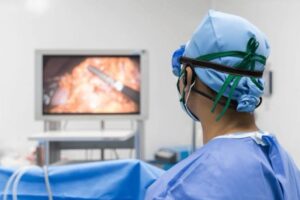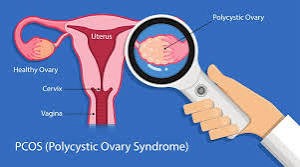Fertility Enhancing Surgery: A Path to Parenthood
Infertility can be a challenging journey for many couples, especially when the cause lies within the woman’s reproductive system. Fortunately, advancements in medical science have paved the way for various fertility-enhancing surgeries, offering hope and a viable solution for women struggling to conceive. This blog will explore the different types of fertility-enhancing surgeries available, their benefits, and how they can help you achieve your dream of becoming a parent.
Understanding Female Infertility
Female infertility can result from various conditions affecting the reproductive organs, including the uterus, fallopian tubes, and ovaries. Common causes include:
- Blocked Fallopian Tubes: This can prevent the sperm from reaching the egg, thereby hindering fertilization.
- Endometriosis: A condition where the tissue that lines the uterus grows outside of it, leading to pain, inflammation, and sometimes infertility.
- Uterine Fibroids: Non-cancerous growths in the uterus that can interfere with implantation or cause miscarriages.
- Polycystic Ovary Syndrome (PCOS): A hormonal disorder that can affect ovulation, making it difficult to conceive.
- Scar Tissue: From previous surgeries or infections, which can affect the reproductive organs.
When these or other issues are identified as the cause of infertility, fertility-enhancing surgery might be recommended.
Types of Fertility-Enhancing Surgeries
- Laparoscopic Surgery
Laparoscopy is a minimally invasive surgery performed with small incisions and the assistance of a camera. It is commonly used to diagnose and treat conditions like endometriosis, ovarian cysts, and blocked fallopian tubes. By removing or correcting these issues, laparoscopic surgery can significantly increase the chances of natural conception.
Benefits:
-
- Minimal scarring
- Shorter recovery time
- Reduced risk of infection
- Hysteroscopic Surgery
Hysteroscopy involves inserting a thin, lighted tube through the cervix into the uterus. This procedure allows the surgeon to view and treat abnormalities within the uterine cavity, such as polyps, fibroids, or scar tissue (Asherman’s syndrome), which may prevent implantation or cause recurrent miscarriages.
Benefits:
-
- Outpatient procedure
- Less invasive than traditional surgery
- Quick recovery
- Tubal Surgery
If the fallopian tubes are blocked or damaged, tubal surgery may be an option. This procedure aims to open or repair the tubes, enabling the egg to travel down the tube and meet the sperm for fertilization. In some cases, tubal reanastomosis (rejoining of the fallopian tubes) is performed after a tubal ligation (previous sterilization).
Benefits:
-
- Restores natural fertility
- Avoids the need for IVF in some cases
- Myomectomy
Myomectomy is the surgical removal of uterine fibroids, which are benign tumors that can cause infertility, miscarriage, or complications during pregnancy. Unlike a hysterectomy, a myomectomy preserves the uterus, allowing the possibility of future pregnancies.
Benefits:
-
- Preserves the uterus for future pregnancy
- Reduces symptoms like heavy menstrual bleeding and pelvic pain
- Ovarian Drilling
Ovarian drilling is a laparoscopic procedure used primarily for women with PCOS who do not respond to other fertility treatments. Small holes are made in the ovary using a laser or fine needle to reduce androgen levels and induce ovulation.
Benefits:
-
- Helps restore regular ovulation
- May reduce the need for ovulation-inducing medications
Is Fertility-Enhancing Surgery Right for You?
Fertility-enhancing surgery is not suitable for everyone and is typically recommended after other less invasive treatments, such as medication or assisted reproductive technologies (ART), have been tried. A thorough evaluation by a skilled gynecologist, including imaging tests and possibly diagnostic surgery, is essential to determine the underlying cause of infertility and whether surgery could improve your chances of conception.
The Road to Recovery
Recovery times vary depending on the type of surgery performed. Minimally invasive procedures like laparoscopy and hysteroscopy typically have shorter recovery periods, with most women returning to normal activities within a week. More extensive surgeries, such as a myomectomy, may require a longer recovery time.
Post-surgery, it’s crucial to follow your doctor’s recommendations, including any prescribed medications and follow-up visits. Your doctor will also guide you on the best time to try for pregnancy after surgery.
Why Choose Dr. Aneeta Talwar?
When considering fertility-enhancing surgery, choosing a highly skilled and experienced gynecologist is crucial. Dr. Aneeta Talwar is a leading Obstetrics & Gynaecology specialist in Bangalore with extensive expertise in fertility treatments and surgical interventions. Her compassionate approach and commitment to patient care ensure that you receive personalized treatment tailored to your specific needs.






